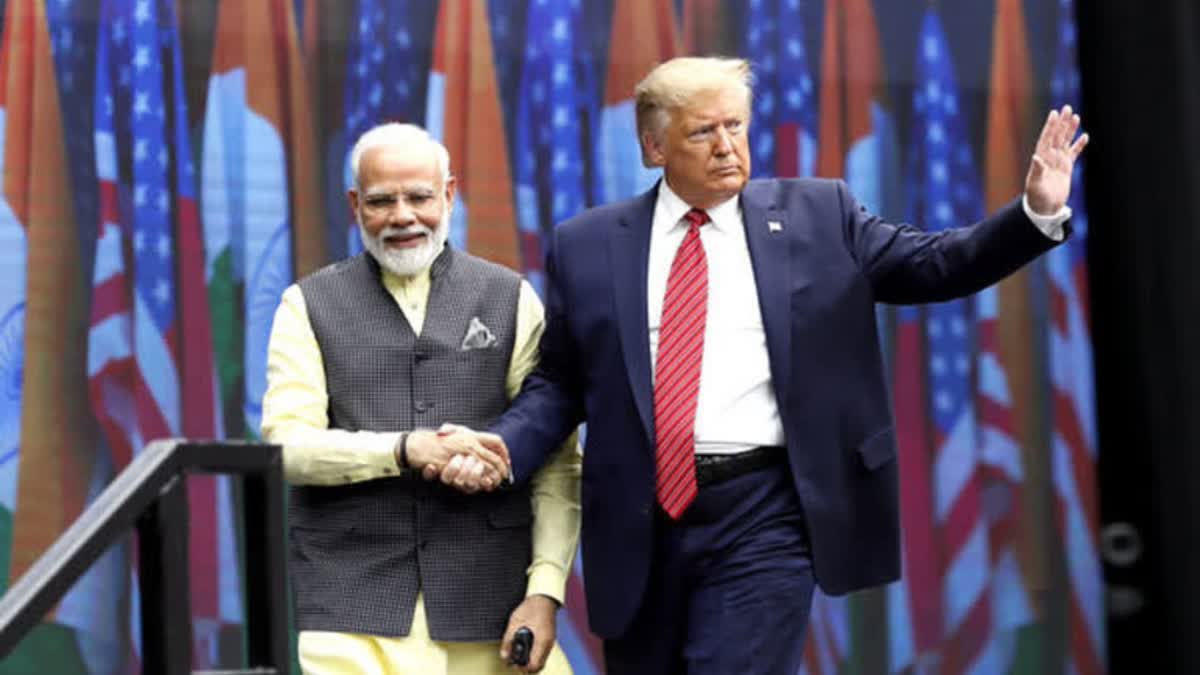Krishnanand
US President Donald Trump seems determined to press ahead with his plan to impose reciprocal tariffs or equal tariffs on other countries that levy higher import duties on US goods. President Trump has often called India having the highest tariff in the world and the issue of reciprocal tariff on Indian goods exported to the US was one of the key issues that figured prominently in the recent talks between the two leaders during Prime Minister Modi’s US visit earlier this month.
In an interview, US President Trump Tuesday reiterated his stance on imposing reciprocal tariffs on countries such as India.
Referring to his discussion with Prime Minister Narendra Modi last week, US President Trump said that he told the Indian leader that he was going to charge the same tariff that India levies on US goods. President Trump said that he informed the Prime Minister that he was going to impose reciprocal tariffs on other countries as well.
“Whatever you charge, I’m going to charge. I’m doing that with every country,” Trump said while sharing details of his conversation with Prime Minister Narendra Modi on the issue of reciprocal tariffs.
What is the tariff?
A tariff is an import duty levied by a country on goods imported from other countries. For example, if India is importing goods from the USA then to protect its domestic industry or farmers in case of agricultural produce, India levies import duty which is called tariff.
US President Trump has often blamed India for having the highest tariff in the world.
“They charge the highest tariffs in the world, just about,” the US President said while referring to the import duties imposed by India on imported goods.
What is the reciprocal tariff?
A reciprocal tariff is an equal amount of tariff imposed by trading partners on each other’s goods. For example, if India levies a 10 per cent import duty on steel or steel products imported from the USA then the USA will also impose a 10 per cent duty on the steel or steel products exported by India to the USA.
However, things are not as simple when it comes to imposing the product-wise reciprocal tariff on each other as India may be importing different products from the USA such as agricultural products and exporting some other category of goods such as engineering goods, steel and aluminium products.
Moreover, India may be importing agricultural products and exporting services to the USA such as software products and other outsourced services.
However, the principle remains the same, if India is imposing a high import duty then the USA will also impose an equally higher duty on the services and goods exported by India to the USA.
Beginning of the trade war
Soon after winning the US Presidential elections, the US President announced his plans to impose reciprocal tariffs on the US's trading partners such as China, Canada, Mexico, and other countries including India.
As per a statement issued by the White House earlier this month, to deal with the “extraordinary threat” faced by the USA which “constituted a national emergency under the International Emergency Economic Powers Act (IEEPA, President Donald J. Trump was implementing a 25% additional tariff on imports from Canada and Mexico and a 10% additional tariff on imports from China, until the crisis was alleviated,.
The White House, however, clarified that the import of energy resources from Canada will have a lower 10% tariff.
Since all these countries, including the USA, are members of the World Trade Organisation, President Trump invoked the national security clause to impose tariffs on these trading partners.
To justify 10 per cent additional tariffs on China’s exports to the USA, the White House officials blamed Chinese authorities for failing to act against the export of precursor chemicals that are used in producing fentanyl. They also blamed China for failing to tackle money laundering, a basis for justifying the national security clause to impose additional tariffs.
In response, China, Mexico and Canada also vowed a swift response to the imposition of additional tariffs by the US government.
Options before India
In anticipation of the imposition of reciprocal tariffs by the USA, Indian authorities started tweaking their policies to cope up with the situation. Finance Minister Nirmala Sitharaman announced a major overhaul of the customs rate structure in her budget speech. The FM removed seven tariff rates and brought down the number of India’s tariff rates to just 8, including zero rates. She also rationalized cess and surcharges imposed on the imports.
India also slashed import duty on some products imported from the USA such as some whiskey products.
Indian authorities are looking for a bilateral trade deal to tackle the adverse impact of reciprocal tariffs. A trade deal between the two countries has been hanging fire for several years as both countries failed to agree on a limited trade deal during President Trump’s first term.
President Trump has so far not rushed to impose any additional tariffs on India as was the case with China, Mexico and Canada. But the road ahead is full of difficult choices for India. President Trump has often described India’s import duty structure as “unfair” and in the second term, he is all set to reshape his country's trade relations with the world, including India.



